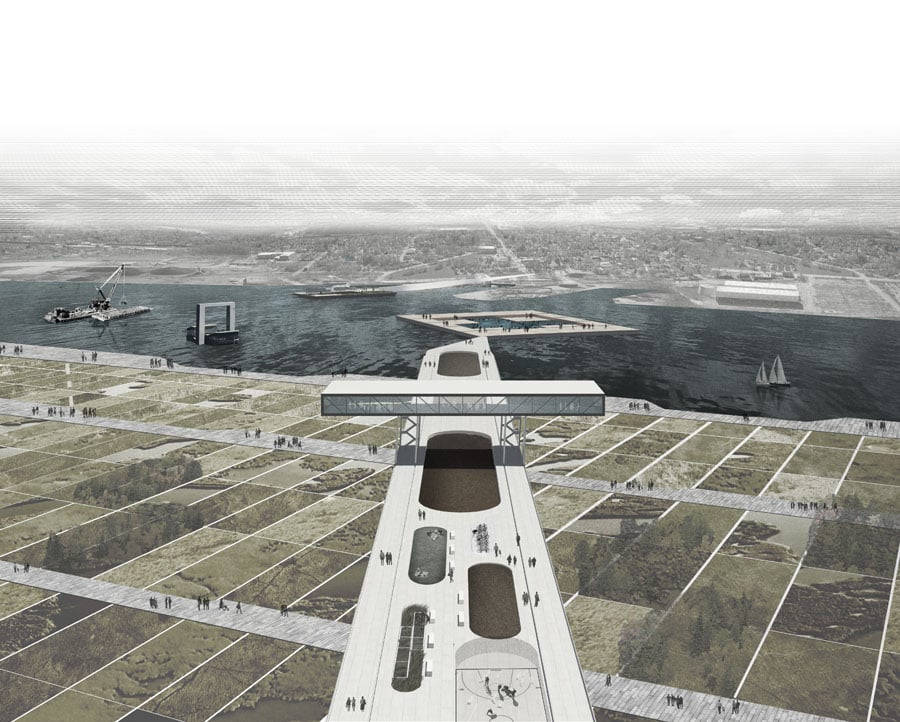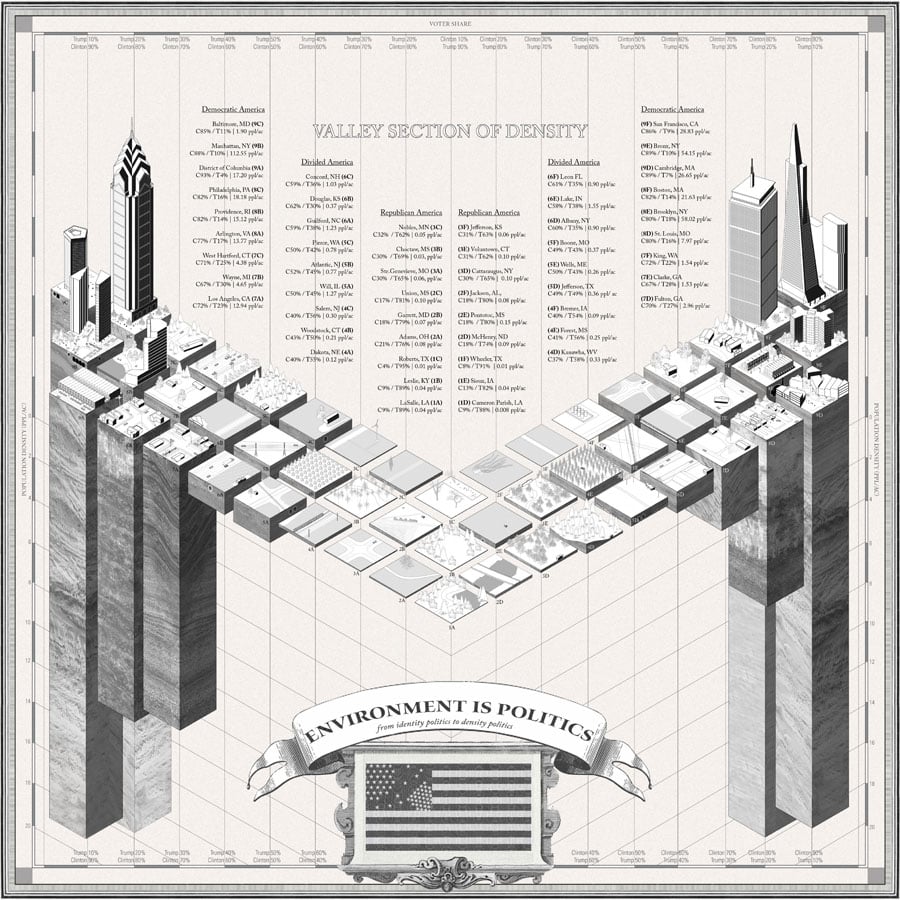
September 15, 2020
The Open Workshop Practices at the Threshold
The Bay Area–based design and research office is sparking collective conversations on social, cultural, and ecological pluralism in architecture.

As society continues to confront oppressive power structures on social, economic, and global levels, architecture makes tangible—gives form to—the often-invisible forces behind these inequities. While architects can often remain complicit in maintaining and enabling institutions of power and normativity, more practitioners are beginning to use their platform to disrupt the status quo. The Open Workshop, a Bay Area–based design and research office, is one such disrupter. By actively questioning architecture’s relationship to ecology, occupation, displacement, and movement, over the course of five years, the studio has developed a more pluralistic conception of form.
For the Open Workshop, form is always collective. A recent book edited by Open Workshop’s founder Neeraj Bhatia, New Investigations in Collective Form (Actar Publishers/CCA Architecture Books, 2019) documents the studio’s rigorous practice, focusing on the relationship between form and territory and its agency to impact political, economic, and ecological systems. The practice takes a critical eye to architectural “common places”—libraries, archives, gardens, public housing schemes—where the grid, stacking, linearity, program striations, are all suspended forms to be manipulated and reimagined as pluralisms.

Prior to print publication, New Investigations in Collective Form opened as an exhibition at San Francisco’s Yerba Buena Center for the Arts in 2018. Composed of models, drawings, and research from the studio’s portfolio, it explored some of the most urgent issues in the Bay Area—climate change, inequity, housing—and highlighted how architecture has the potential to amplify diverse voices for a truly pluralistic society. Acknowledging the fluctuating conditions of the urban realm and its ecological context, the exhibition investigated what collectivity is and can look like through an immersive installation that invited visitors to physically interact with the artifacts.
Fifty-years after the publication of Japanese Pritzker Laureate, Fumihiko Maki’s seminal text Investigations in Collective Form (1964), this set of “new investigations” positions itself as an extension of Maki’s theories. Maki pioneered the vast inquiry on the “collective form,” which he broke down into three categories: Compositional Form, Mega Form, and Group Form. In Maki’s vision, these three patterns or modes are not mutually exclusive but can coexist in one configuration, defining basic relationships that always exist between individual elements and the whole. Unfurling over twenty-five projects, New Investigations presents five new categories that build off of the original three—Living Archives, Rewiring States, Commoning, Articulated Surfaces, and Frameworks. The categories reposition Maki’s grappling with the role of architectural form in society and the issues that design constantly negotiates from isolationism to technological hegemony.

The book begins with a foreword by Pier Vittorio Aureli which brings forth critiques of architecture’s tendencies toward self-referentiality, detachment, and peripherality. He writes, “The problem with architecture is that it often ‘naturalizes’ power, making it acceptable—in housing, parks, public buildings—all sorts of constructions we now take for granted as inevitable paraphernalia of what we call the city.” The book then unfolds in a series of eight essays, project (built and unbuilt) analyses, diagrams, and drawings that revisit and reconstruct architectural common places and help define The Open Workshop’s reinvigorating idea of the collective. Contributors include scholars and practitioners such as Peggy Deamer, Charles Waldheim, Jenny Odell, and Neeraj Bhatia.
On speaking with Bhatia about the origin of these speculations and his personal experience balancing individualism and collectivism, he says, “Growing up with Indian parents in Canada, I was raised as an immigrant caught between two cultures, but more importantly with the mentality of ‘don’t disrupt the system’—which already places you as secondary in the society you navigate.”

The projects demonstrate the rewiring of socio-political systems and the role of the Anthropocene through attention to culture, resources, governance, identity, and scale. The practice often investigates thresholds, centering design as a negotiator between the determinate and the indeterminate by re-examining the concept of “open work” laid out by semiotician and critic, Umberto Eco in 1962. A work of art is considered “open” when the artist is consciously aware of the level of indeterminacy or ambiguity inherent in the work and that it is only reconciled—or completed—by the viewer. Taking from this relationship between subject, object, and viewer, the studio positions architecture as a choreographed performance between the human, the non-human, and the environment. A state of collectivity is attained as the dynamism (movement, shifting, transformation) of the subject completes the work.
Traversing scales—from small installations and domestic spaces to territorial infrastructure—The Open Workshop’s projects straddle the fine line between choice and control, impermanence and permanence. One chapter titled “A Room in the City” describes their proposal for a porous urban room that is a restroom as well as a reflective space of respite for the urban citizen. And “Re-Commoning the Frontier” speaks to mitigating the effects of gentrification—displacement, economic necessity, cultural estrangement—by creating alternative community spaces along San Francisco’s Southeast Waterfront.

Expanding on political theorist, Hannah Arendt’s, definitions of pluralism, the book comprises extensive research through texts and diagrams, across a wide array of “collectivisms” such as studies that depict voting behavior and the geographic/spatial implications of the 2016 election (Environment as Politics), a scheme that proposes an installation of plant species displaced due to colonization (Garden of Displaced Roots), and the rechanneling of dredge material to protect a fragile riverfront in Toledo, Ohio (Dredgescaping Islands).
Bhatia says, “Striking a balance between making people have a collective conversation to create things that are larger than the sum of any of those individual constituencies, while also holding on to those distinctions, local nuances, and subtleties, is very powerful. As our normative myths of harmony and homogeneity are being busted today—whether by fires in California, hurricanes in Louisiana, or social movements and protests—a reordering of the system is at play.”
New Investigations in Collective Form is about having a conversation bigger than the self. In this precarity, there isn’t room for good or bad binary thinking, only a constant negotiation. Bhatia ponders, ”In the process of it all, one does tend to wonder, how much can you change the world when you are working from a place that is by nature part of a system that itself needs to be questioned? This is an exciting time when this meta-project of redefining the discipline is starting to occur.”
You may also enjoy “Design Before Air Conditioning Surveys Early Experiments in Climate Control”
Would you like to comment on this article? Send your thoughts to: [email protected]
Register here for Metropolis Webinars
Connect with experts and design leaders on the most important conversations of the day.
Recent Viewpoints
Viewpoints
Navigating the Path to Net Zero





